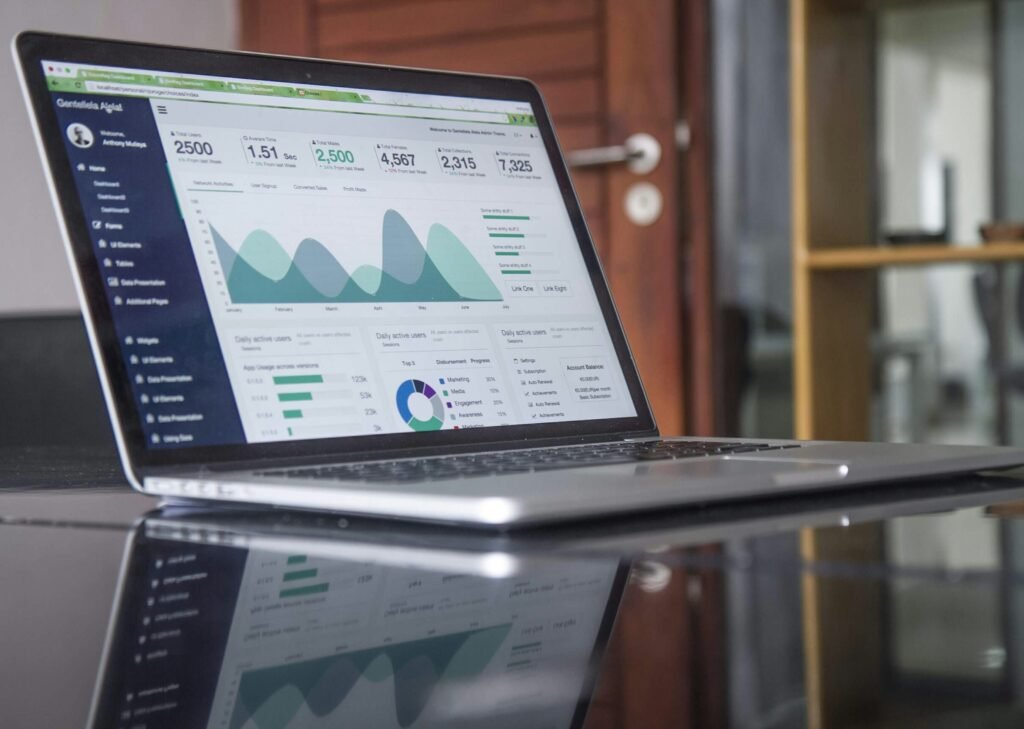Are you one of the millions of Americans working from home and wondering if you can reduce your tax burden? Our comprehensive Home Office Tax Kit 2024 is designed to help self-employed individuals, freelancers, and small business owners understand, calculate, and properly claim the home office deduction. With potential savings of hundreds or even thousands of dollars, this is one tax benefit you don’t want to overlook.
What IS the Home Office Deduction? (The Basics)
The home office deduction allows eligible taxpayers to deduct certain expenses related to using part of their home for business purposes. This valuable tax benefit can reduce your taxable income by allowing you to deduct costs you’re already paying, such as a portion of your mortgage interest, insurance, utilities, repairs, and depreciation.
The IRS offers two methods for calculating this deduction: the simplified method and the actual expense method. We’ll explain both approaches in detail so you can choose the one that maximizes your tax savings.

Eligibility Check: Can YOU Claim the Home Office Deduction in 2024?
Before diving into calculations, let’s determine if you qualify for the Home Office Tax Kit 2024 benefits.
The #1 Rule: Self-Employed vs. Employees
Critical information: Due to changes implemented in the Tax Cuts and Jobs Act (TCJA), W-2 employees generally cannot claim the federal home office deduction, even if you work remotely. This deduction is primarily available to:
- Self-employed individuals
- Independent contractors
- Freelancers
- Small business owners
- Gig workers
If you receive a W-2 from your employer, you likely don’t qualify for this federal tax deduction, regardless of how much you work from home.
Requirement 1: Regular and Exclusive Use
To qualify for the home office deduction, you must use part of your home regularly and exclusively for business. This means:
- Regular use: The space is used consistently for business activities, not just occasionally.
- Exclusive use: The space is used only for business purposes.
Examples:
- Qualifies: A spare bedroom converted entirely into an office with only business furniture and equipment.
- Doesn’t qualify: A guest bedroom with a desk where you sometimes work, but also houses a bed for visitors.
- Doesn’t qualify: Your dining room table where you work during the day but also eat meals with your family.
Requirement 2: Principal Place of Business
Your home office must be your principal place of business, which means:
- It’s where you conduct most of your business activities, or
- You use it regularly for administrative or management activities (like bookkeeping, ordering supplies, scheduling appointments) and have no other fixed location for these activities, or
- You use it for meeting clients or customers in the normal course of business, or
- It’s a separate structure unattached to your home (like a converted garage or studio) used in connection with your business.
Examples:
- Qualifies: A graphic designer who works primarily from home and has no other office.
- Qualifies: A plumber who performs services at customer locations but handles all administrative tasks exclusively from a home office.
- Qualifies: A therapist who sees clients in a room used exclusively for sessions.

Quick Eligibility Checklist
Answer these questions to determine if you qualify:
- Are you self-employed, an independent contractor, or a small business owner? ✓
- Is your home office used regularly (not occasionally) for business? ✓
- Is your home office used exclusively (100%) for business? ✓
- Is it your principal place of business OR where you regularly meet clients OR a separate structure? ✓
If you answered “yes” to all questions, you likely qualify for the home office deduction!
Calculating Your Deduction: Simplified vs. Actual Expenses
Now that you’ve confirmed eligibility, let’s explore the two methods for calculating your deduction as part of your Home Office Tax Kit 2024.
The Simplified Method Explained
The simplified method is exactly what it sounds like—straightforward and easy to calculate.
Formula: $5 per square foot of your home used for business (maximum 300 square feet) Maximum deduction: $1,500 (300 sq ft × $5)
Pros:
- Minimal record-keeping
- No need to calculate business percentage
- No home depreciation (or recapture)
- Less risk of audit
Cons:
- Capped at $1,500
- May result in a smaller deduction for larger offices or high-cost areas
Best for:
- First-time claimants
- Those with smaller office spaces (under 300 sq ft)
- Those who don’t want to track detailed home expenses
- Those in lower-cost areas

The Actual Expense Method Explained (The Detailed Dive)
The actual expense method requires more calculation and record-keeping but can result in a larger deduction, especially for those with larger home offices or those in high-cost areas.
Step 1: Calculate your business use percentage
- Divide the square footage of your home office by the total square footage of your home
- Example: 200 sq ft office ÷ 2,000 sq ft home = 10% business use
Direct vs. Indirect Expenses
- Direct expenses: Costs that benefit only the business part of your home (100% deductible)
- Example: Painting only your office space
- Indirect expenses: Costs that benefit your entire home (deductible based on business percentage)
- Example: Mortgage interest, utilities, insurance
Common Deductible Home Office Expenses
- Mortgage interest (business percentage of total)
- Rent payments (business percentage of total)
- Real estate taxes (business percentage of total)
- Homeowners/renters insurance (business percentage of total)
- Utilities: electricity, gas, water, trash (business percentage of total)
- Internet and phone service (business percentage of total)
- Home repairs and maintenance (direct expenses 100%, indirect apply business percentage)
- Depreciation on the business portion of your home
- Home security system (business percentage of total)
- Cleaning services (business percentage of total)
Step-by-Step Calculation Guide (Example)
Let’s walk through a hypothetical calculation for a freelance graphic designer:
- Home size: 2,000 sq ft
- Office size: 200 sq ft
- Business use percentage: 10%
- Annual expenses:
- Mortgage interest: $12,000 × 10% = $1,200
- Property taxes: $4,000 × 10% = $400
- Utilities: $3,600 × 10% = $360
- Internet: $1,200 × 10% = $120
- Homeowners insurance: $1,000 × 10% = $100
- Direct expenses (office painting): $300 × 100% = $300
- Home depreciation: $5,400 × 10% = $540
Total deduction: $3,020
Pros:
- Potentially larger deduction
- No deduction cap
- Accounts for all eligible expenses
Cons:
- Requires detailed record-keeping
- More complex calculations
- Home depreciation must be recaptured if you sell your home
Essential Record Keeping: Your Documentation Toolkit
Proper documentation is crucial for claiming the home office deduction, especially if you’re audited by the IRS.
What Records to Keep (Checklist):
- Home measurements: Documentation of total home square footage and office square footage
- Expense records: Bills, receipts, and statements for:
- Mortgage interest or rent
- Property taxes
- Utilities (electricity, gas, water, internet)
- Insurance
- Repairs and maintenance
- Photos: Images of your home office showing exclusive business use
- Calendar: Log showing regular business use of the space
- Floor plan: Diagram showing the location and measurements of your office
- Tax forms: Copies of Form 8829 and Schedule C
How Long to Keep Records
Keep all home office deduction records for at least 3 years after filing your tax return. However, for certain items like depreciation, consider keeping records for 7 years or even the entire time you own your home plus 3 years.

Common Mistakes to Avoid with the Home Office Deduction
Steer clear of these potential pitfalls when using your Home Office Tax Kit 2024:
- Claiming as a W-2 employee: Remember, employees generally cannot claim this deduction for federal taxes.
- Violating the “exclusive use” requirement: Your office must be used solely for business.
- Poor record-keeping: Inadequate documentation can lead to denied deductions during an audit.
- Incorrectly calculating business percentage: Double-check your measurements and math.
- Claiming too large a percentage: The deduction should be reasonable compared to your home’s size.
- Forgetting depreciation recapture: If you claim depreciation, you may need to pay taxes when you sell your home.
- Mixing personal and business expenses: Keep clear separation between the two.
Filing the Deduction: Key IRS Forms
To properly claim your home office deduction, you’ll need to use the correct tax forms:
- Simplified Method: Report on Schedule C (Profit or Loss from Business)
- Actual Expense Method: Complete Form 8829 (Expenses for Business Use of Your Home) and report the total on Schedule C
You can find the latest forms and instructions directly on the IRS website.
FAQ: Your Home Office Tax Kit 2024 Questions Answered
Q: What qualifies for home office deduction? A: A space in your home used regularly and exclusively for business purposes by self-employed individuals, freelancers, or business owners. It must be your principal place of business or meet other specific criteria.
Q: How do I calculate my home office deduction? A: You can choose between the simplified method ($5 per square foot, max 300 sq ft) or the actual expense method (calculating the business percentage of actual home expenses).
Q: Can employees claim home office deduction in 2024? A: Generally, no. W-2 employees cannot claim the federal home office deduction under current tax law, even if working remotely.
Q: What records do I need for home office deduction? A: Keep records of home and office measurements, expense receipts, photos of your office space, floor plans, and copies of relevant tax forms.
Q: Can I switch between simplified and actual methods each year? A: Yes, you can choose the method that gives you the largest deduction each tax year.
Q: Does the home office deduction increase my audit risk? A: While the deduction has historically been considered an audit trigger, the simplified method was introduced partly to reduce this concern. Proper documentation and legitimate claims minimize risk.
Conclusion: Putting Your Home Office Tax Kit Together
The home office deduction can be a significant tax benefit for self-employed individuals, freelancers, and small business owners. By understanding the eligibility requirements, calculating your deduction correctly, and maintaining proper documentation, you can confidently claim this valuable tax benefit.
Your Home Office Tax Kit 2024 checklist:
- Verify your eligibility
- Choose your calculation method
- Gather and organize your records
- Complete the proper tax forms
- File your taxes with confidence
Remember, while this guide provides comprehensive information about the home office deduction, tax laws can be complex and change frequently. For personalized advice about your specific situation, consider consulting with a qualified tax professional.
Have you been claiming the home office deduction? Are you planning to use the simplified or actual expense method this year? Whatever your situation, proper planning can help maximize your tax benefits while ensuring compliance with IRS regulations.
Disclaimer: This article is intended for informational purposes only and does not constitute tax, legal, or professional advice. Tax laws and regulations change frequently. Always consult with a qualified tax professional regarding your specific situation.





